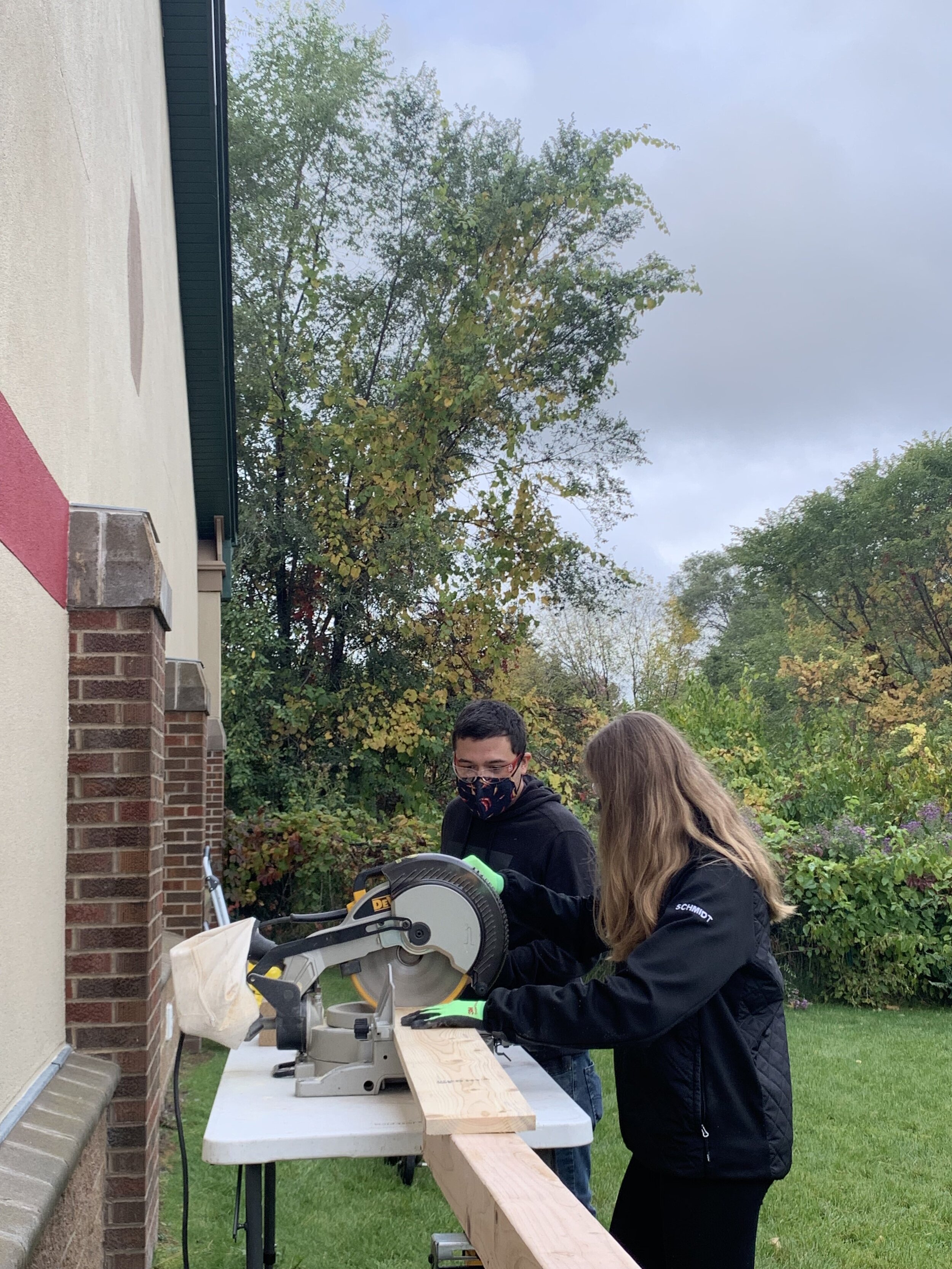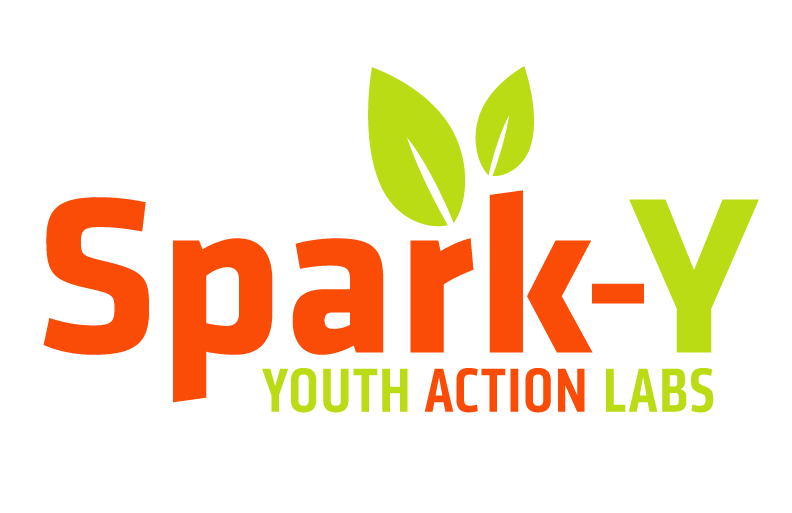In partnership with Minnesota Sea Grant and the North Central Regional Aquaculture Center, (NCRAC), Spark-Y Interns developed and filmed two instructional videos relating to tilapia - a popular fish used in aquaponic systems.
Viewing entries tagged
aquaponics
About the Spark-Y Right Track+ Internship: The Right Track+ program is a collaboration between Ramsey County, the City of Saint Paul, local employers, and community organizations including Spark-Y. The goal of this program is to provide job training and professional development to unemployed or underemployed young adults experiencing the negative economic impacts of the pandemic for the purpose of assisting them in entering an in-demand career pathway.
Growing Vertical: A Right Track + Internship Experience
My name is Jordan Bergstrom. I am a senior at the University of Minnesota, Twin Cities, studying Urban Infrastructure and the Environment. I am an aspiring vertical farmer, and am planning on attending grad school to earn an MPS in Horticulture. My passions include the intersection of sustainability and environmentalism and urban areas. After hearing about Spark-Y at a career fair, I decided to apply for the Right-Track internship program. Since then, I have started maintaining and operating the aquaponic systems and managing many of the gardens that Spark-Y maintains. Prior to this internship, I knew little about the operation of these systems, however I have learned so much about vertical farming and aquaponic/hydroponic growing techniques since starting this position!
Vertical growing greens at Spark-Y’s Urban Agriculture Lab
Vertical farming is a foundational aspect of Spark-Y’s operations and mission. Using primarily aquaponic technology, Spark-Y has set up a number of vertical farm systems in a plethora of schools across the Twin Cities metro. For those who haven’t heard of vertical farming and aquaponics, as they are still relatively new phenomena, vertical farming is a vertically oriented method of food production achieved through either tower designs, growing racks, or conceptual terraced designs (which are far more rare). Aquaponics is a subset of vertical farming which combines hydroponic technology, which is a soilless method of growing that utilizes constant root exposure to nutrient-rich water, with aquaculture, the raising of fish and other aquatic life. Through a symbiotic relationship, the waste produced by fish is utilized as a fertilizer for plants, after being chemically transformed from Ammonium to Nitrate by bacteria growing in the system. Since water is recycled, the only inputs into the system are fish food and seeds/light layers of soil.
Aquaponic and hydroponic methods of growing have enormous environmental benefits in comparison to conventional farming, using 99% less land, 90% less water, and 100% less harmful chemicals than in soil cultivation. Additionally, these systems allow for urban production, allowing for hyper-localized produce production that eliminates transportation emissions and results in riper, healthier produce in comparison with imported varieties. The only major downside to aquaponic/hydroponic production is increased energy usage due to grow-lights, however this is partially offset by eliminating the need for motorized farm implements as well as decreased land usage for agriculture.
At Spark-Y’s headquarters, there is a large timber frame aquaponic structure set up that produces microgreens each week. My role in this system is to germinate the seeds, place them in the system, then harvest, package, and deliver the microgreens to the Eastside Food Co-op each week. The planting process involves gathering plastic trays, sprinkling a light layer of dirt in them, weighing out the correct number of seeds, and sprinkling the seeds throughout the trays. After this, the trays are sprayed lightly in the sink, and then sprayed with hydrogen peroxide. The water and peroxide help the seeds to germinate (sprout). To aid this process, the seeds are stacked up and weighed down with heavy objects as seeds also respond well under stronger gravitational pressure. After a few days, the germinated seeds are unstacked and placed in the aquaponic system, where the water and nutrients feed them for a few days until they are ready to be harvested. Other maintenance on this system includes testing the fish tank water to make sure chemical levels are safe for fish production, cleaning tanks, and replacing tank water.
In addition to the aquaponic systems, there is a hydroponic grow tower in the Urban Agriculture Lab. The grow tower consists of a water reservoir in the base, a pump that pumps water through a tube up to the top level of the grow rack, spigots that release water into the rows, and rows of plants that consist of a hard sponge-like material that’s bent around a white cloth strip and plants grown in little soil plugs. After the water cycles down through the racks, what isn't used by the plants or evaporated is cycled back into the system. So far, we have had some trouble getting the plants to survive, largely due to plugged spigots and possibly due to intense lighting. We are altering aspects of the tower week by week and recording changes in a spreadsheet. Regardless of the results, this will give us useful experience in growing plants hydroponically!
Overall, it's a lot of work managing aquaponic and hydroponic systems. However I think, these growing methods have the power to revolutionize our food systems if implemented correctly. Vertical farming gives us the potential to achieve food sovereignty as communities, both localizing food production and democratizing it by lessening dependence on large multinational corporations. It comes with plenty of environmental, economic, and health benefits, and will only become a more attractive option as technology and public opinions shift. Hopefully, by teaching youth about these growing methods and allowing them to practice these methods will empower them to play active roles in the ever growing sustainable economy!
Learn all about the basics of aquaponics with this online, interactive aquaponics system.
At Spark-Y, we are working with our partners to collectively navigate distance-learning, and at the same time, we recognize the importance of hands-on learning activities that engage the hearts, hands, and minds of young people. With Oak Hill Montessori School returning to in-person learning, we were able to partner with them to give students hands-on experience learning about sustainability and power tools while creating their very own aquaponic system. After creating this system, they will now be able to take care of fish and grow plants right at the school! Of course, all Covid-19 precautions were put into place during this build in order to make this happen as safely as possible. The build was outside, masks were required, and students rotated to stations in small groups.
Why do we love building aquaponic systems you may ask? Well, it's a great tool to teach concepts such as sustainability, biology, chemistry, math, and much more. Aquaponic systems facilitate a symbiotic relationship between fish and plants. Fish waste adds ammonia to the system. Bacteria then converts the ammonia into nitrites and then nitrates. Plants use nitrates to create proteins for growth, and in return the fish get clean water. It’s an incredible way to grow fresh produce all year long!
Now that we got the biology lesson out of the way, let’s talk about why hands-on learning is so important. First of all, it's fun and engaging. I don't know about you but when I was sitting for a school lecture I often found myself day-dreaming and not soaking in a lot of the information. It is so important to facilitate learning with several senses at once. Young people need room to tinker, make mistakes, and try again. Particularly in the era of Covid, it is important to keep students from getting screen fatigue by adding some hands-on learning opportunities into their curriculum.
Of course, the students at Oak Hill were excited to not only be away from their screens doing hands-on learning, but also to be outside and using tools. They rotated to three stations throughout the day for the build. One station measured dimensions of the wood planks for the tank, another cut the wood, and the last station assembled the aquaponic tank.



While assembling the system, one student, Saphira, said, “I’m excited to have fish we can take care of in our own garden. I am grateful for Spark-Y because we get to have hands-on experience during Covid instead of just studying. It makes school so much more fun.”
Throughout this process, the students had lots of energy because they were so excited about the project. While we love the enthusiasm, I also made the point that in construction projects like this one, efficiency is key. I told them, "if you're not paying attention, you're not being efficient and potentially creating an unsafe environment for your team." To my surprise the students really resonated with that, and one student even started calling out to other students, "that's not efficiency!" whenever other students were goofing around. As time went on more students were yelling, "efficiency!" when they completed a certain task. I really got a kick out of this because in my professional experience my bosses have always harped about efficiency. This is something that was encouraged but never taught in school. This is why hands-on learning is so important to me and many others. Without it we miss the nuances between practice and theory. The aquaponics build was truly a great way for students at Oak Hill to take a break from the screen and learn about aquaponics and sustainability.
Students at Oak Hill Montessori school now have their very own aquaponic system where they can grow produce right at the school. They can now work together to care for their system and continue hands-on learning during Covid and beyond!
Written by Ryland Sorensen - Spark-Y Sustainability Educator














